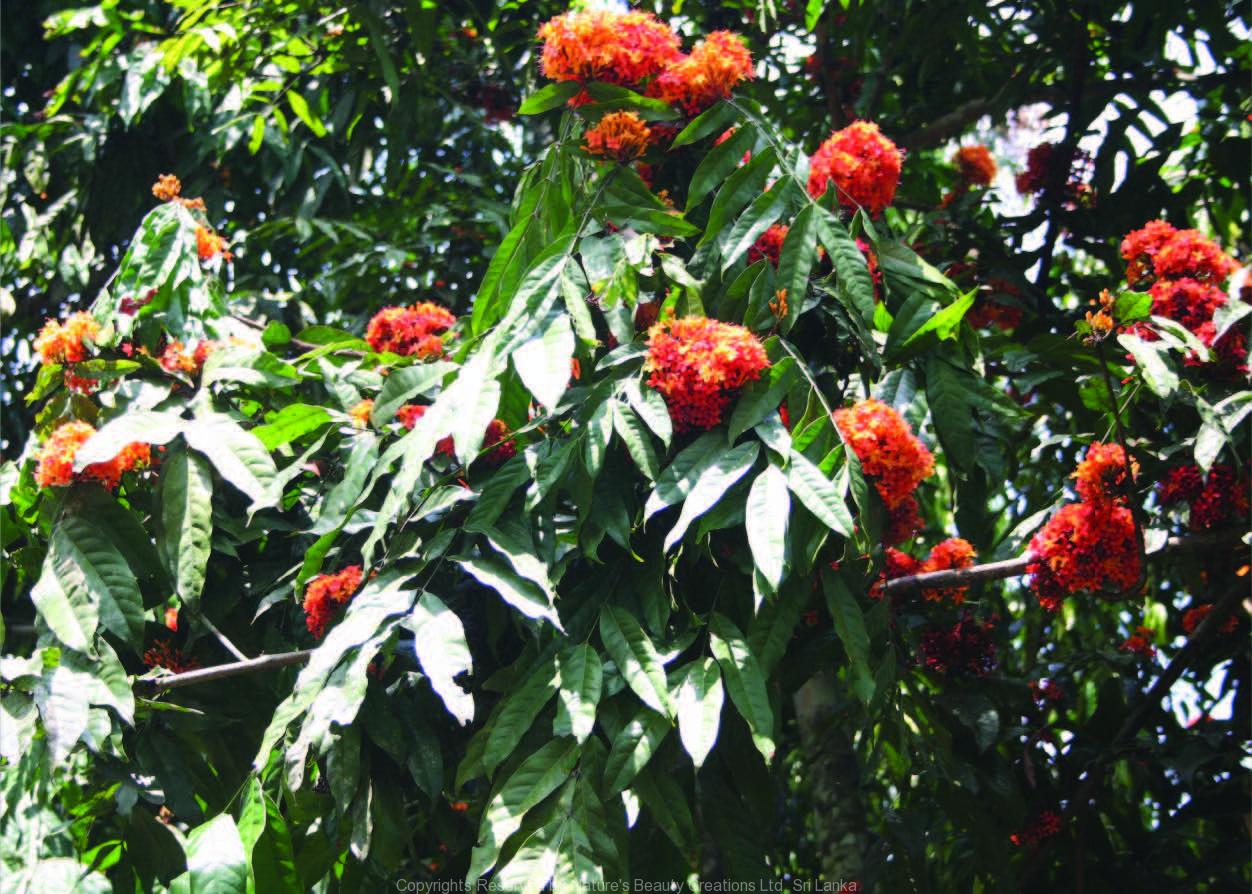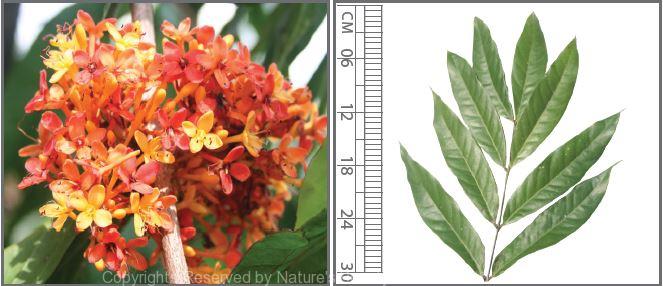

Traditional Knowledge
Useful plant parts :
Bark and flower
Uses in traditional medicine :
- Decoction of the bark is taken to control internal bleeding including piles
- Ground fresh flower juice mixed with bee honey is prescribed for blood dysentery
Scientific Research
Chemical constituents:
Tannins, proanthocyanidins: procyanidin B2, leucoanthocyanidins and β-sitosterol, lignan glycosides: lyoniside, schizandriside, nudiposide, icariside derivatives, flavoids: epicatechin, epiafzelechin derivatives from bark
Bioactivity :
Alcohol extracts of bark: antioxidative, antidiabetic, anti-inflammatory, analgaesic, antimutagenic; ethanol extract of stem, flowers and leaves: antibacterial; flavonoids: chemopreventive activity on two stage skin carcinogenesis; acetone extract of seeds: antipyretic
Clinical:
References : Cibin, T. R. et al., (2010), Chemoprevention of skin cancer by the flavonoid fraction of Saraca asoka, Phytotherapy Research, 24(5), 666–672. Gahlaut, A. et al., (2013), β-sitosterol in different parts of Saraca asoca and herbal drug ashokarista: Quali-quantitative analysis by liquid chromatography-mass spectrometry, J Adv Pharm Technol Res, 4(3), 146-150. Indrani, N. and Balasubramanium, K., (1985), Isolation of condensed tannins from Saraca asoka- part I, Leather Sci, 31, 349-350. Indrani, N. and Balasubramanium, K., (1985), Isolation of condensed tannins from Saraca asoka- part II, Leather Sci, 32, 12-13. Middlekoop, T. B. et al., (1985), Proanthocyanidins in the bark of Saraca asoka Roxb de Wilde, Z Naturforsch, 40B, 855-857. Nag, D. et al., (2013), Antimutagenic and genoprotective effects of Saraca asoca bark extract, Toxicol Ind Health. Panchawat, S. and Sisodia, S. S., (2010), In vitro antioxidant activity of Saraca asoka Roxb. De Wilde stem bark extracts from various extraction processes, Asian journal of pharmaceutical and clinical research, 3(3), 231-233. Pradhan, P. et al., (2009), Saraca asoca (Ashoka): A Review, Journal of Chemical and Pharmaceutical Research, 1(1), 62-71. Preethi, F. et al., (2010), Hypoglycemic activity of saraca indica Linn barks, Journal of Pharmacy Research, 3(3), 491-493. Preethi, F. et al., (2011), Anti-inflammatory activity of the barks of Saraca indica Lin, Pharmacologyonline, 2, 657-662. Sadhu, S. K. et al., (2007), Lignan glycosides and flavonoids from Saraca asoca with antioxidant activity, Journal of Natural Medicines, 61, 480-482. Sasmal, S. et al., (2012), Pharmacognostical, phytochemical and pharmacological evaluation for the antipyretic effect of the seeds of Saraca asoca Roxb, Asian Pac J Trop Biomed, 2(10), 782-6. Shahid, M. et al., (2007), Antibacterial activity of aerial parts as well as in vitro raised callus of the medicinal plant Saraca asoca (Roxb.) Wild, Canadian Journal of Microbiology, 53, 75-81
Copyrights Reserved By
Natures Beauty Creations



